#k-t extinction
Text
I just realized that for the pterosaurs, K-T was much worse than just being wiped out
Because imagine - you split off from dinosaurs in the Triassic, specializing in becoming the first vertebrates to conquer the skies. Except that, nope, in the Jurassic, those pesky dinosaurs also decide that they want a go at it, and develop flight, forcing you to fight them for a lot of niches and specialize even more.
Then comes the asteroid. Your lineage is dead, that's a certainty. But the dinosaurs? Will they survive, as they were some of the most diverse land vertebrates on the planet? Will they also completely die out like you?
NOPE! They are wiped out except for a handful of small flying species, meaning that they get to survive and radiate specifically in the one niche in which you excelled and that they stole from you. And, worst of all, it's their descendants, not you, that will be remembered as the archetypal flying vertebrates.
#pterosaur#dinosaur#palaeoblr#k-t extinction#i'm genuinely sad for the pterosaurs they didn't deserve this
283 notes
·
View notes
Text
It's super wack to think that the original paper theorizing that dinosaurs were killed by an asteroid is less than 50 years old. Like I grew up being taught that an asteroid caused the K-T extinction event, but there are many people alive today who weren't because it wasn't even proven yet.
#anecdotes by peachdoxie#k-t extinction#dinosaurs#and yes the idea WAS proposed before the 1980 paper#but the information necessary to prove it was not yet formalized#and the og paper was met with much controversy
82 notes
·
View notes
Text
“Tomorrow is a hope, not a promise.”

19 notes
·
View notes
Text
youtube
The Real Killer Of The Dinosaurs, March 26, 2024
Sources & further reading: https://sites.google.com/view/sources-what-actually-killed-t/
A ruthless murder was committed! Someone killed the dinosaurs and we have the murderer! Witnesses say that an Everest-sized asteroid hit Earth, devastated the planet and caused a mass extinction. A simple, fascinating and convincing explanation. Or… is it?
Kurzgesagt – In a Nutshell
#Kurzgesagt#palaeontology#dinosaurs#prehistory#extinction#perspective#K-T extinction#Cretaceous-Paleogene extinction#evolution#volcanism#geology#climate change#climatology#palaeoclimatology#Youtube
0 notes
Text

and as the earth runs to the ground
oh, girl, it's you that i lie with
#inspired by the last tyrant#that shit hurted#tyrannosaurus#tyrannosaurus rex#t rex#tyrannosauridae#tyrannosaurid#tw animal death#tyrannosaurids#dinosaur#dinosaurs#dinosaur art#paleoart#k-pg extinction#mesozoic#cretaceous#cretaceous period#late cretaceous#paleoblr#theropod#theropoda#my art
10 notes
·
View notes
Text


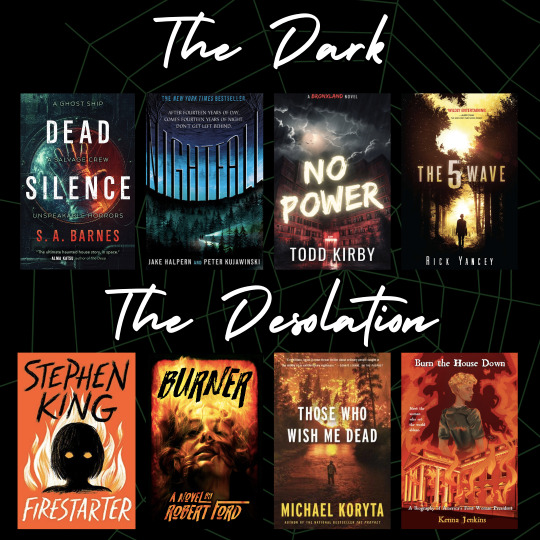


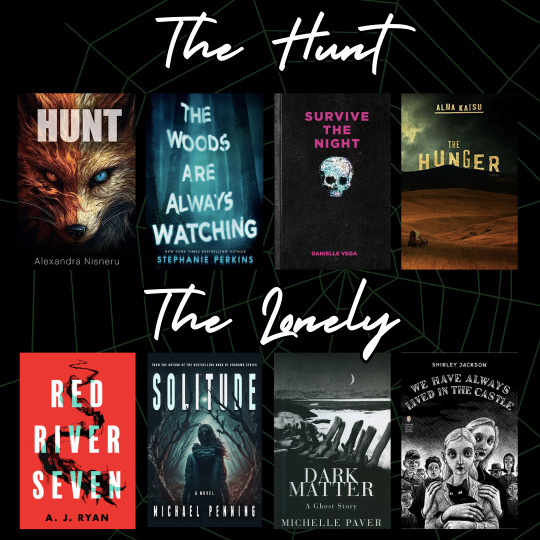



💚👁️🕸️ In honour of The Magnus Protocol releasing today, here are some book recommendations based on The Magnus Archives Fears!! 🕸️👁️💚
Detailed list of books below the cut!
For more book recommendations, especially queer horror, check out my Bookstagram @hauntedstacks
The Buried ⚰️
- Into the Sublime by Kate A. Boorman
- Stuck by Ben Young
- The Luminous Dead by Caitlin Starling
- The Deep by Nick Cutter
The Corruption 🦠
- What Moves the Dead by T. Kingfisher
- Green Fuse Burning by Tiffany Morris
- The Honeys by Ryan La Sala
- She Is A Haunting by Trang Thanh Tran
The Dark 🌑
- Dead Silence by S.A. Barnes
- Nightfall by Jake Halpern & Peter Kujawinski
- No Power by Todd Kirby
- The 5th Wave by Rick Yancey
The Desolation 🔥
- Firestarter by Stephen King
- Burner by Robert Ford
- Those Who Wish Me Dead by Michael Koryta
- Burn the House Down by Kenna Jenkins
The End 💀
- Funeral Girl by Emma K. Ohland
- Pet Sematary by Stephen King
- Under the Whispering Door by TJ Klune
- This Thing Between Us by Gus Moreno
The Extinction 🦴
- Lost Signals by Max Booth III
- Bride of the Tornado by James Kennedy
- No Safety in Numbers by Dayna Lorentz
- The Rules of the Road by C.B. Jones
The Eye 👁️
- Video Palace by Maynard Wills
- Episode Thirteen by Craig DiLouie
- A History of Fear by Luke Dumas
- The Watchers by A.M. Shine
The Flesh 🦷
- You’ve Lost A Lot of Blood by Eric LaRocca
- Carnivore by Justin Boote
- A Certain Hunger by Chelsea G. Summers
- Tender is the Flesh by Agustina Bazterrica
The Hunt 🏹
- Hunt by Alexandra Nisneru
- The Woods Are Always Watching by Stephanie Perkins
- Survive the Night by Danielle Vega
- The Hunger by Alma Katsu
The Lonely ☁️
- Red River Seven by A.J. Ryan
- Solitude by Michael Penning
- Dark Matter by Michelle Paver
- We Have Always Lived in the Castle by Shirley Jackson
The Slaughter 🥩
- Manhunt by Gretchen Felker-Martin
- Your Shadow Half Remains by Sunny Moraine
- American Psycho by Bret Easton Ellis
- The Summer I Died by Ryan C. Thomas
The Spiral 🌀
- That Darkened Doorstep by Catherine Jordan
- Mind the Mirrors by Amanda Leanne
- Grey Noise by Marcus Hawke
- Last to Leave the Room by Caitlin Starling
The Stranger🕴️
- It Looks Like Us by Alison Ames
- My Best Friend’s Exorcism by Grady Hendrix
- The Deep by Alma Katsu
- The Outside by Stephen King
The Vast 🪂
- From Below by Darcy Coates
- Into the Drowning Deep by Mira Grant
- Floating Staircase by Ronald Mafi
- Nightmare Sky by Red Lagoe
The Web 🕸️
- The Taking of Jake Livingston
- The Fervor by Alma Katsu
- The Book of Accidents by Chuck Wendig
- Come Closer by Sarah Gran
If You Like The Magnus Archives 💚
- Thirteen Stories by Jonathan Sims
- Family Business by Jonathan Sims
- Gas Station by Jack Townsend
- Horrorstör by Grady Hendrix
#the magnus archives#the magnus protocol#tma#tmp#Jonathan sims#rusty quill#martin blackwood#jonmartin#booklr#bookstagram#books#horror books#queer books#horror book recs#book recs#mine
730 notes
·
View notes
Text
A Watership Down/Warriors/Silverwing/Burrow’s End style “small mammals have their own complex culture and go on adventures” novel written from the perspective of prehistoric tree shrews wandering the post-apocalyptic world after the K-T extinction event.
729 notes
·
View notes
Text
Spectember 2023 #06: Some Big Reptiles
An anonymous request asked for a "large ankylosaur-like herbivorous notosuchian":
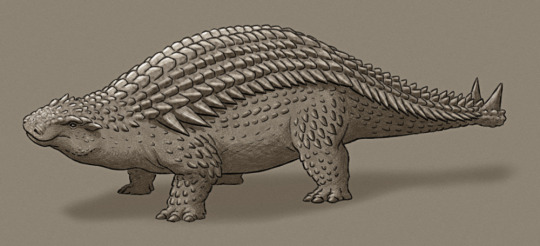
Mitafosuchus pachysomatus is descended from Simosuchus-like notosuchians in Madagascar that survived through the K-T extinction.
Highly convergent with the now-extinct ankylosaurs, it's a 5m long (~16'4") squat tank-like herbivore with hoof-like claws, and a wide short snout used for grazing on low vegetation. Heavy interlocking osteoderm amor covers most of its body, protecting it against the big carnivorous crocodyliformes that also still survive in this version of Cenozoic Madagascar.
———
Another anon wanted to see a "giant warm blooded lizard":

Atopohippus zestamenus is a descendant of invasive Argentine giant tegu lizards that became established on an island archipelago. At 2m tall (~6'6") and around 6m long (~20') it's an example of island gigantism, and occupies a high-browsing-herbivore ecological niche similar to giant tortoises and prosauropods.
Its ancestors' seasonal endothermy has become full endothermy in this species, partly due to young individuals having a very rapid growth rate and metabolism – their main defense against the predators on their island home (primarily carnivorous tegu-descendants and large birds of prey) is to simply get to a big body size as fast as they possibly can.
#spectember#spectember 2023#speculative evolution#notosuchia#crocodyliform#pseudosuchia#tegu#squamata#lizard#reptile#art#science illustration
272 notes
·
View notes
Text

Postcard illustration for the Angelology IV campaign. I tried something new and made this one in a lineless style.
For this piece I was inspired by the Chicxulub Asteroid, which caused the Cretaceous-Paleogene extinction event - aka. extinction of the dinosaurs.
When I learned about it, it was in the context of learning about the K-T boundary, a geological marker with high iridium levels. I think it's very cool that we can see such an impactful event in the geological record across the world. I was even lucky enough to visit a site where I could see the boundary in-person! This was back when I was studying geology. All part of my complex and mysterious backstory ahahahaha! Anyway, rocks are cool, and I hope you like my artwork.
#angelology#angelology iv#angelology iv: angels of extinction#angel#angels#eldritch angel#eldritch angels#biblically accurate angel#biblically accurate angels#angelcore#angel art
133 notes
·
View notes
Text
currently absolutely enraptured learning about the k-t extinction event that killed the dinosaurs and sired in waves upon waves of ferns after the fungus started eating the dead biomass but I can only decipher this through what we know as human people published in papers one piece at a time over the past 30 years so I feel like I’m reading house of leaves like ergodic literature but at least in those cases the author knew what was going on. ahhhh the terror of the unknown and the desolation of many magnitudes and such haha
998 notes
·
View notes
Text
Fossil Novembirb 2: The Survivors
The End-Cretaceous Extinction was one of the most devastating - and tragic - events on our planet.
In the blink of an eye, the world changed from a thriving biosphere to a decimated one. The asteroid caused worldwide wildfires, tsunamis, and the dramatic release of particles into the air that blocked out the sun.
Nothing over 25 kg could survive, because they had nowhere to hide from the devastation. Anything under that limit had to have somewhere to hide - water or burrowing worked best - and something to eat, which was easier said than done. When the plants can't eat, nothing can.
And yet, life survived - not just life, but dinosaurs themselves!

Conflicto, by @otussketching
In fact, one of the first fossils we have from the Cenozoic is Conflicto, a Presbyornithid - like "Styginetta" and Teviornis yesterday! - from Antarctica
Why these dinosaurs, and no others?
They had beaks, which would have helped them to access available food sources such as seeds and spores (plant material in a protective casing)
They did not live in trees, but usually near or with water - perfect places to hide
They were powerful fliers, allowing them to escape the flames and whatever else they needed to
Other than that? Random chance.
Much of the evolution of life on this planet is down to Sheer Dumb Luck
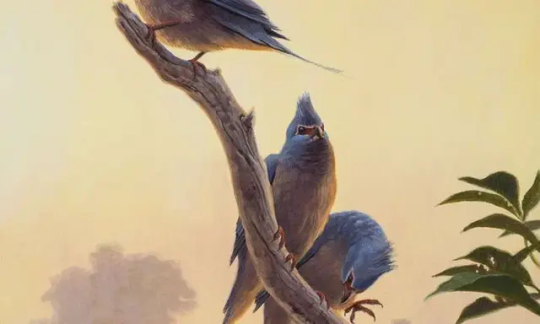
Tsidiiyazhi by Sean Murtha
What happened next was truly remarkable: an adaptive radiation of dinosaurs the likes of which is rarely seen
With all of those newly opened niches, Neornithines adapted quickly, so quickly we can't actually figure out how different major groups of Neoavians - aka, most birds - actually relate to one another.
After all, there was just *so much* free real estate!

Qianshanornis by @alphynix
In fact, many of these dinosaurs evolved right back into niches that their ancestors had famously lived in - penguins show up so quickly that we're giving marine birds their own day, replacing the now-lost Hesperornithines; Tsidiiyazhi and others quickly replaced the empty tree-bird niches left behind by the lost Enantiornithines; and raptors show up quickly too, already reminiscent of the lost Dromaeosaurs.
Qianshanornis, a mysterious raptor from China, had sickle claws just like its lost bretheren! In fact, it looks like it might be a Cariamiform, a group of dinosaurs including living Seriemas and the extinct Terror Birds, which often have sickle claws like Dromaeosaurs did!
Don't fix what isn't broken, I guess!

Australornis by @thewoodparable
Non-Neoavians diversified too, with fowl doing just fine across the boundary - Presbyornithids like Conflicto, as well as mysterious forms like Australornis.
Palaeognaths remain weirdly absent, but don't worry - the earilest ones will show up before the Paleocene epoch is done!
The Cenozoic begins with the Paleogene Period, which has the first epoch of the Paleocene - this was a climatic quagmire, with frequent fluctuations at the beginning before a dramatic rise in temperatures at the end. This climate confusion would affect bird evolution greatly - and lead to the diversification of many kinds, some of which we still have today!
Sources:
Ksepka, D. T., T. A. Stidham, T. E. Williamson. 2017. Early Paleocene landbird supports rapid phylogenetic and morphological diversification of crown birds after the K-PG mass extinction. Proceedings of the National Academy of Sciences of the United States of America 114 (30): 8047 - 8052.
Mayr, 2022. Paleogene Fossil Birds, 2nd Edition. Springer Cham.
Mayr, 2017. Avian Evolution: The Fossil Record of Birds and its Paleobiological Significance (TOPA Topics in Paleobiology). Wiley Blackwell.
168 notes
·
View notes
Text
Something unexpected that I really love about Prehistoric Planet is how it stays in a single period in time and explores it, rather than trying to cover the entire Mesozoic and show the world changing. If you showed an alien the programme with the intro cut out and the title censored, they probably would never even guess it was a show about a distant time in Earth’s past. In just being a wildlife documentary that happens to be set 66 million years ago, it’s showing the Maastrichtian world as a living, full-formed, very real world that existed for an unbelievably long time, rather than a phase in an even longer evolutionary process. Now don’t get me wrong, I love wide sweeps of evolutionary history like Walking With Dinosaurs too, but Prehistoric Planet’s vibes are very different and I never knew I needed them. In fact, I’m really hoping we won’t even see a trace of the meteorite in episode five. Let me just go on a little tangent to really get into why.

This is Trix the T. rex. I saw her in the Naturalis natural history museum. She lived and died 67 million years ago. Now, it is very easy for me to see that date and be filled with a sense of impending disaster. ‘Just before the end’ is a thought that quickly appears. But when you really think about it, that’s ludicrous. Trix lived her life, and then after she died her species continued to thrive for a million years. There’s thrice as much time between her and the Tyrannosauruses who died in the K-Pg extinction as there is between me and the first members of my species! And as for the thousands of years of recorded human history, those are a mere drop in that sea of time. Those years didn’t pass any faster back then than they do now, nor were they any less real. There were just as many moments in any one of those thousand millennia between Trix and the meteorite as there were in the millennium between me and Basil the Bulgar-slayer. If a wizard told you your species and your world would continue to thrive for a million years before eventually most of your clade would get wiped out by a terrible catastrophe, would you see your world as a doomed and temporary one about to go over a precipice? I think I would be delighted to know we have such a vast sea of time left.
This got longer and more philosophical than I expected, but the point is that I love the focus on the Maastrichtian as a diverse, living world, rather than the last age of the Mesozoic. We don’t know whether Prehistoric Planet is set a million, fifty thousand, or nine hundred years before impact, and it doesn’t really matter either. Even though all those dates are, geologically speaking, so close to the end of the Cretaceous we could barely tell the difference between them, they all have more time left than any of the animals can possibly conceive of. None of the animals we see in Prehistoric Planet have ever seen a Stegosaurus, and none of them will die as a consequence of a meteorite striking the Earth.
#prehistoric planet#dinosaur#tyrannosaurus#vicky gets emotional and philosophical about dinosaurs#extinction#vicky's vritings
3K notes
·
View notes
Text
All my haters become craters at my K-T extinction event of sucess
74 notes
·
View notes
Text
Quick addition to my paleontology analysis because I'm a nerd and I need to get across how fucking old Badboyhalo is!!!
Bad is at least as old as the Cretaceous-Paleogene (K-Pg/K-T) mass extinction! This is the extinction event that killed off all of the Non-Avian dinosaurs! In total, it killed about 60 to 70% of all species on earth! This happened around 66 million years ago!
Bad is also possibly as old as the Permian-Triassic mass extinction, then he would have also been around for the Triassic-Jurassic mass extinction event. This extinction event killed off about 80% of all species on earth! It happened around 201.3 million years ago!
Bad might be as old as the Permian-Triassic mass extinction event! This extinction event killed off about 90% of all species on earth! It is the largest known mass extinction event! This happened around 251.9 million years ago!
That is at least one mass extinction event that Bad would have been around for!!!
53 notes
·
View notes
Text
Gonkoken nanoi Alarcón-Muñoz et al., 2023 (new genus and species)
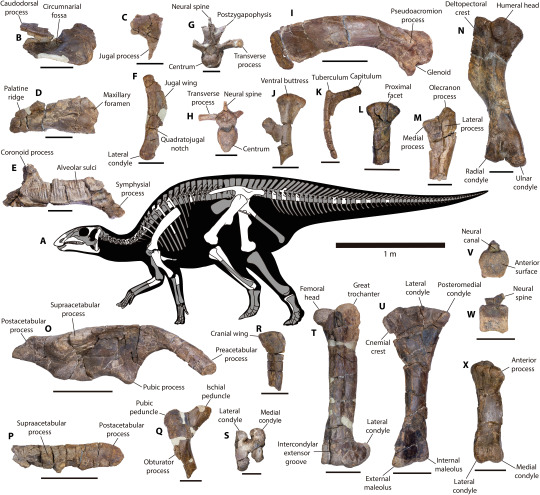
(Select bones and schematic skeletal of Gonkoken nanoi [scale bars = 50 mm for B–G, J, K–N, Q, S, and V–X, and 100 mm for H, I, O, P, R, T, and U], with preserved bones in white, from Alarcón-Muñoz et al., 2023)
Meaning of name: Gonkoken = duck/swan-like [in Tehuelche]; nanoi = for Mario “Nano” Ulloa [discoverer of dinosaur bones at the site where the original fossils were found]
Age: Late Cretaceous (Maastrichtian), between 70.5–71.7 million years ago
Where found: Dorotea Formation, Magallanes, Chile
How much is known: Numerous bones including parts of the skull, limbs, hips, and vertebral column. It is unknown whether any of these bones belonged to the same individuals, though at least three individuals are represented.
Notes: Gonkoken was a hadrosauroid, closely related to but not a member of the “core group” of duck-billed dinosaurs (hadrosaurids). All other hadrosauroids previously named from South America were true hadrosaurids. In fact, prior to the discovery of Gonkoken, non-hadrosaurid hadrosauroids near the end of the Cretaceous were not known from the Americas.
However, reexamination of supposed hadrosaurid fossils from Southern Patagonia and Antarctica suggests that these may also be remains of non-hadrosaurid hadrosauroids. It might have been that hadrosaurids (which probably originated in the Northern Hemisphere) never made it to the southern reaches of South America prior to the end-Cretaceous mass extinction, allowing other types of hadrosauroids to persist there in the absence of competition.
Reference: Alarcón-Muñoz, J., A.O. Vargas, H.P. Püschel, S. Soto-Acuña, L. Manríquez, M. Leppe, J. Kaluza, V. Milla, C.S. Gutstein, J. Palma-Liberona, W. Stinnesbeck, E. Frey, J.P. Pino, D. Bajor, E. Núñez, H. Ortiz, D. Rubilar-Rogers, and P. Cruzado-Caballero. 2023. Relict duck-billed dinosaurs survived into the last age of the dinosaurs in subantarctic Chile. Science Advances 9: eadg2456. doi: 10.1126/sciadv.adg2456
82 notes
·
View notes
